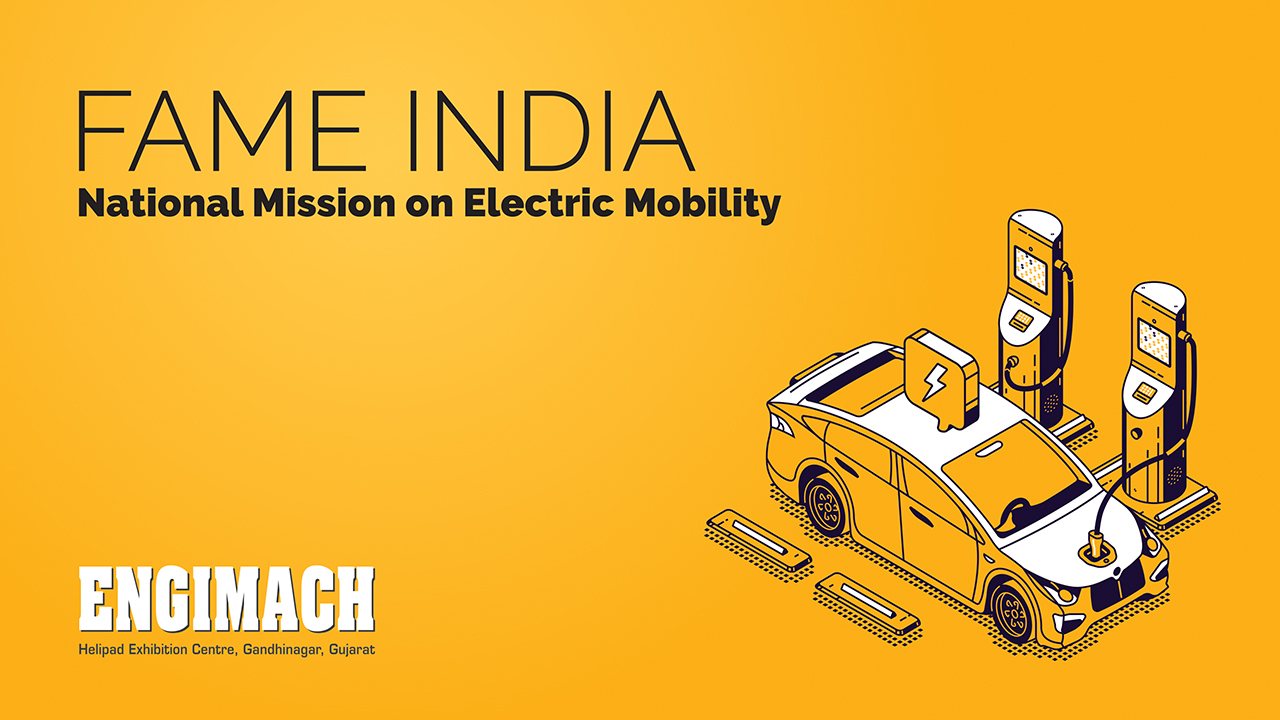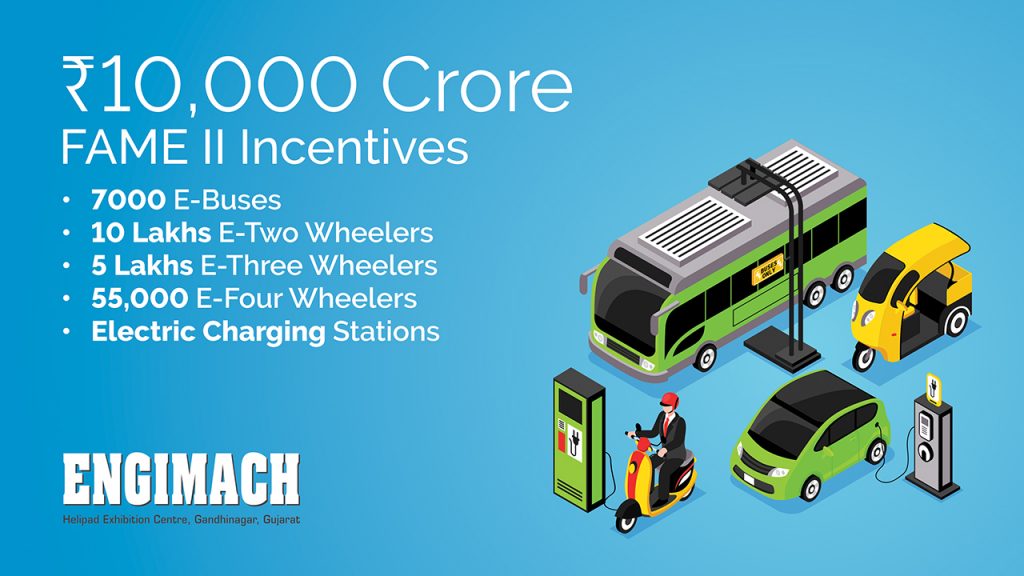
The FAME India project supports the hybrid and electric vehicle market, its development and manufacturing ecosystem. In the first place, they had launched the National Electric Mobility Mission Plan (NEMMP) 2020 to attain 6-7 million sales year on year from 2020 onward. The government aims to achieve national fuel security by promoting the same and provides fiscal and monetary incentives to kick start this nascent technology. This would not only benefit the electrical and manufacturing industry but also the auto component and green energy sector. These sectors are also the key focus sectors of ENGIMACH 2021 organised by K and D Communication Ltd.
THE FIRST PHASE OF FAME INDIA
The FAME scheme had an outlay of ₹8.95 billion and provided subsidies for electric vehicles. This included two-wheelers and three-wheelers, hybrids and e-cars and buses. Phase-I initially launched for 2 years, focused on implementation through demand creation, technology platform, pilot project and charging infrastructure.
To further promote sustainable growth, the year 2015 witnessed the launch of the Faster Adoption and Manufacturing of (Hybrid &) Electric Vehicles in India (FAME India) Scheme. Grants for specific projects were also sanctioned under these components. EVs under all vehicle segments could benefit from the demand incentive of ₹343 Cr approx. in the form of an upfront reduced purchase price. The National Automotive Board under D/o Heavy Industry implemented and monitored the amount of incentives availed. The government of India launched the scheme under National Mission on Electric Mobility in 2011/ National Electric Mobility Mission Plan 2020. As a result of this, there could be a raise progressive induction of reliable, affordable and effective electric vehicles.
Subsequently, the extension shifted from time to time. Lastly, the extension was allowed up to 31st March 2019 under the framework of the Demand Incentive Disbursement Mechanism. At present, the scheme has 30 Original Equipment Manufacturers registered under it with 137 models of all categories. The electrification expects about 50 million litres of fuel-saving and about 129 million kg CO2 reduction. The digitalized portal of the schemes shows the benefits of e-vehicles sold. Additionally, the portal reflects MIS reports to help in monitoring and management.
FAME II
Commencing from April 2019, the Department of Heavy Industry approved Phase II of the scheme - FAME II with an outlay of ₹10,000 Cr for 3 years. It allotted about 85 per cent of the total budgetary support for demand incentives. The aim furthermore is to support an estimate of 7000 e-buses, 10 Lacs electric two-wheelers, 5 Lacs electric three-wheelers and 55000 electric four-wheeler passenger cars including strong hybrid.
The scheme encourages manufacturers to build electric vehicles while also creating and developing charging infrastructure. The government estimate spending of around 10,000 Cr on this phase in the upcoming year of 2021 and 2022. It states that there will be high use of electric buses to reduce pollution, traffic and other types of difficulties. The scheme mainly focuses on private vehicles in the two-wheeler segment in metropolitan cities. It encourages the use of electrical charging stations over diesel and petrol ones. The Government of India has planned on giving out 670 e-buses in the state of Chandigarh, Goa, Gujarat and Maharashtra and creating 241 charging stations. These stations, supposedly, are to be planted by the roads of Gujarat, Kerala, Madhya Pradesh, Port Blair and Tamil Nadu.
MAJOR HIGHLIGHTS UNDER FAME INDIA
- Promotion of electrical vehicles among the residents of India
- Establishing an Eco-friendly public transport system
- Controlling the pollution level rising in various cities
- Encouraging people to purchase/switch electrical vehicles
- Constructing more charging stations
- Providing society on purchase of electrical vehicles
- Interlinking of renewable sources of energy powered through charging systems
SUBSIDY UNDER THE FAME INDIA SCHEME

To be eligible for incentives under phase-II of the scheme, vehicles ought to meet minimum technical criteria and registered as “Motor Vehicles” as per CMVR. Although, only vehicles fitted with advanced chemical batteries fall under the criteria. The scheme will apply to vehicles used for public transportation, registered for commercial purposes in e-3W, e-4W and e-bus, or private-owned vehicles registered as e-2Ws to generate greater emphasis for the masses.
The government, however, has not yet prescribed any application procedure for the subsidiary under FAME-II. Check for update on the official website of heavy industry, ministry of heavy industries and public enterprises, Government of India.

